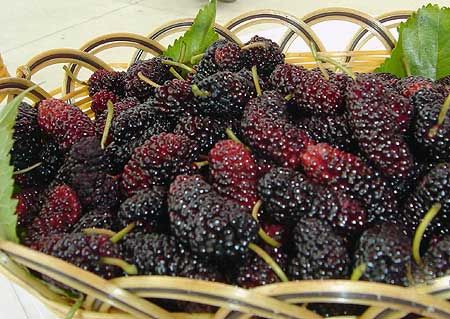The mulberry is the fruit of the mulberry tree. It is normal for the purple red mulberry to fade, but it should be a normal fruit color. It will be lighter after washing several times. If, as the public said, the water color of the mulberry mulberry is black, then there is a problem. Now. Some mobile hawkers pick up goods from the individual wholesale market. Such mulberries are difficult to keep fresh, and they are generally stored. When they are sold, traders are looking to sell them in good looks, and some pigments or ripening agents are used to make the mulberry black and purple.
The ripening mulberry eats no taste in the mouth and chews softly. In addition, the normally mature mulberry stalks are not purple and should be green. If dyed with pigments, the stems will turn purple.

1. How to buy mulberry
When buying, people should pay attention to fuller particles, thick, no water, relatively strong, it is better, if the mulberry color is relatively deep, the taste is sweet, and it is relatively raw, the public should pay attention, may have been dyed of. Therefore, people must pay attention when buying.
2. How to clean mulberry
The most important thing for washing mulberry is two points. The first one is to kill the bacteria slightly. This we can usually use salt water to solve. Therefore, when washing mulberry, it is best to use light salt water for a few minutes. The second is to prevent the presence of pesticide residues. This can be done in two ways. The first is that it is convenient and convenient to flush it under flowing water. The other way is to neutralize it with alkaline water. Both methods have their advantages. Disadvantages. Let us look at the advice given by agricultural experts.
Mulberry is difficult to clean because of its rough appearance and thin skin. Therefore, many people simply eat with water in order to save time. Actually, mulberry is a herbaceous plant. The relatively low plant and delicate and juicy fruit all cause it to be susceptible to pests and microorganisms. Therefore, pesticides are often used during the cultivation of mulberries. These pesticides, fertilizers, and germs, etc., are easily attached to the rough surface of mulberry. If the cleaning is not clean, it may cause diarrhea and even pesticide poisoning. To clean the mulberry, it is best to wash it continuously with tap water. Flowing water can prevent pesticides from penetrating into the fruit.
Wash the mulberry and do not eat it immediately. It's best to soak for 5 minutes in dilute salt water or rice water. Light salt water can kill harmful microorganisms on the surface of mulberry; Taomi water is alkaline and can promote the degradation of acidic pesticides. When washing mulberry, be careful not to remove the mulberry stalk, if the sang sorghum is soaked in water, the remaining pesticide will enter the fruit with water, causing more serious pollution. In addition, do not soak mulberry pods with detergents such as Detergent, which are difficult to clean and tend to remain in the fruit, causing secondary contamination.